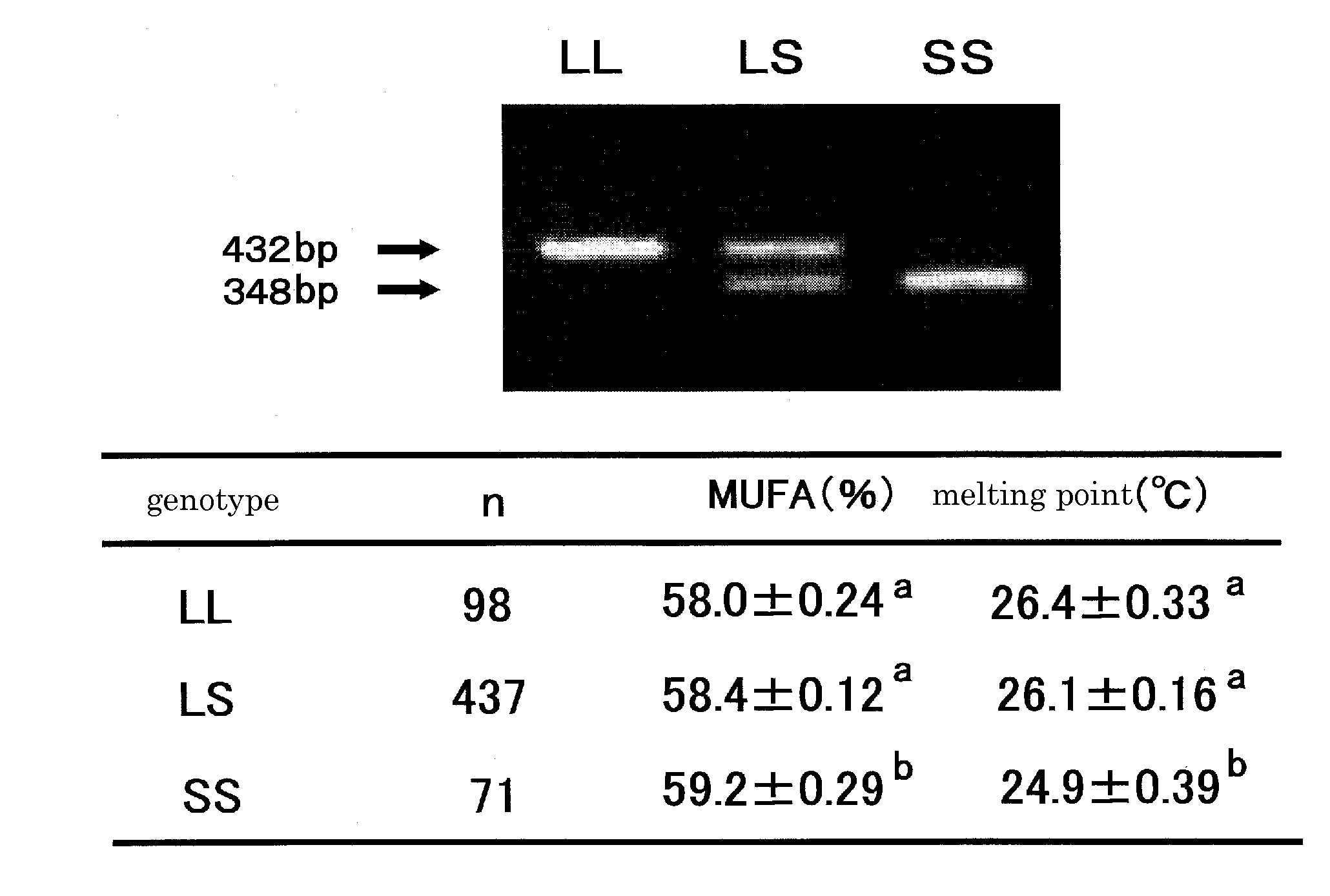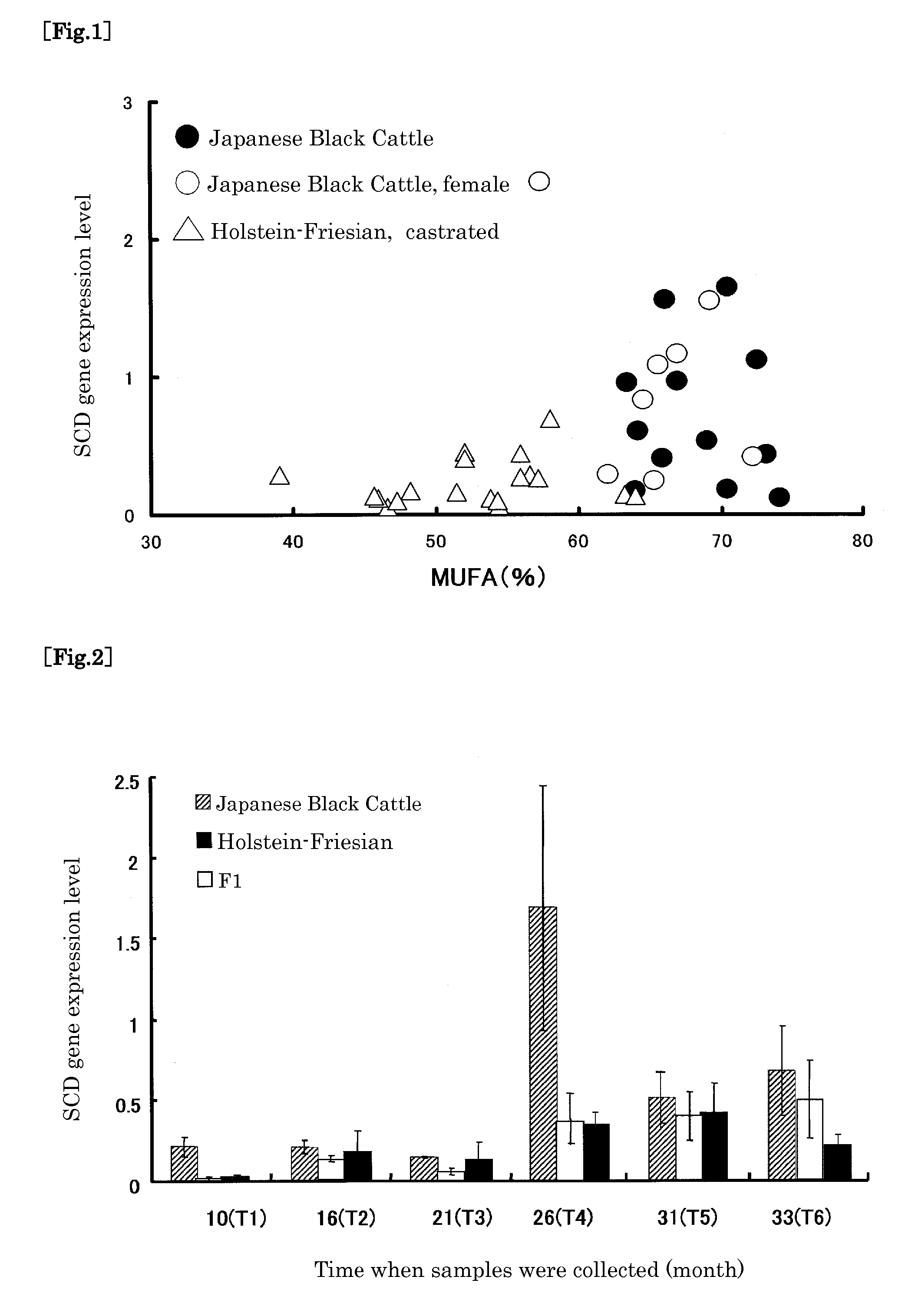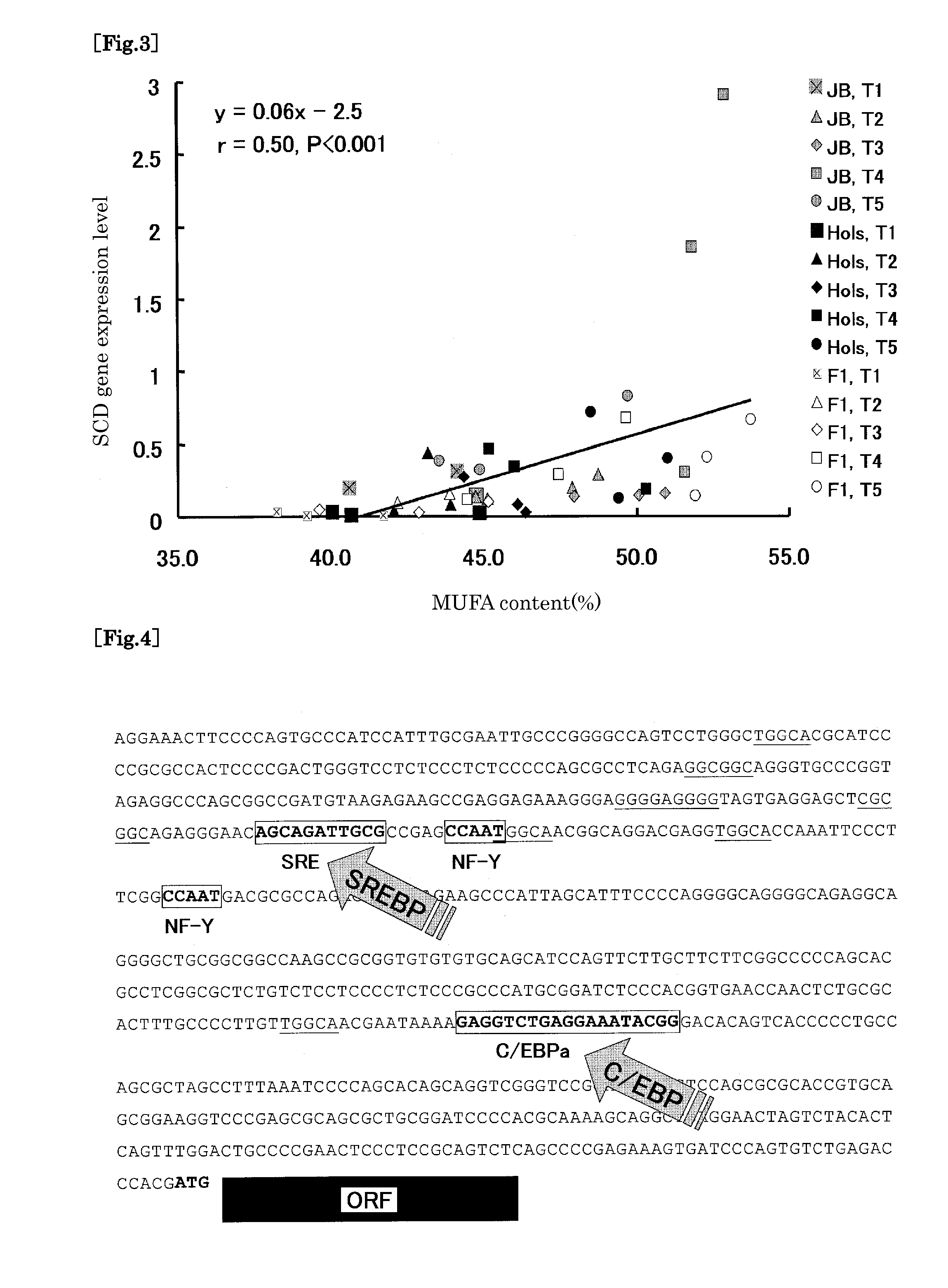Method of Determining Gene Relating to Favorable Beef Taste and Texture
a gene and gene technology, applied in the field of can solve problems such as difficulty in evaluating the quality of beef, and achieve the effect of evaluating not only the content of unsaturated fatty acids
- Summary
- Abstract
- Description
- Claims
- Application Information
AI Technical Summary
Benefits of technology
Problems solved by technology
Method used
Image
Examples
example 1
Relation Between the Content of Unsaturated Fatty Acid and the SCD Gene Expression Level
[0087] The content of unsaturated fatty acid is different among the cattle kinds, and as for Japanese Black Cattle, the content of unsaturated fatty acid is higher than that of the Holstein-Friesian, and the melting point in beef fat of Japanese Black Cattle is lower. We investigated a relation between the content of unsaturated fatty acid and the expression level of bovine SCD gene, in order to examine a possibility that the SCD gene expression level may be associated with the difference of the unsaturated fatty acid content among the cattle kinds.
[0088] After bovine mRNA was extracted and purified from cattle's adipose tissue or muscular tissue according to a conventional method, cDNA was synthesized with a reverse transcriptase. Using this cDNA as a template, real-time PCR was carried out with TaqMan™ probe, in order to measure the SCD gene expression level (the amount of mRNA). The used se...
example 2
Relation Between the SCD Gene Expression Level and the SREBP-1 Gene Expression Level
[0096] We paid attention to the SREBP-1 gene, as a factor affecting the SCD gene expression level, because of the following reasons; (1) as shown in FIG. 4, there is a SRE sequence at the upstream of SCD gene, and the SREBP-1 is considered to bind to this SRE sequence and have an activity of regulating transcription of SCD gene; (2) there is a QTL (Quantitative Trait Loci), that is related to body fat, in the chromosomes 19 and 26, and SCD gene is located in the chromosome 26 while SREBP-1 gene is located in the chromosome 19. This suggests that SREBP-1 may be mainly involved in the control of the SCD gene expression.
[0097] In order to examine the relation between the SCD gene expression level and the SREBP-1 gene expression level (the amount of mRNA), real-time PCR was carried out similarly to the above-mentioned real-time PCR. The sequences of a forward primer, a reverse primer and a TaqMan™ pro...
example 3
Relation Between the MUFA Content and the Polymorphism Found on SREBP-1 Gene
[0099] We investigated the presence of any mutation on SREBP-1 gene. As a result, we found out a polymorphism in the fifth intron (intron 5) between one genotype (L type) having the underlined 84 bases of FIG. 6 while another genotype (S type) losing these 84 bases.
[0100]FIG. 7 shows the result of judging the above SREBP-1 genotype, about each cattle kind of Japanese Black Cattle and the Holstein-Friesian. The genotype was judged by the above-mentioned PCR. Used reagents and condition for reaction, etc. are described above, and here omitted explanation thereof. As shown in FIG. 7, all the Holstein-Friesians had only the L type in this investigation.
[0101]FIG. 8 shows not only the result of determining the genotype of each test cattle by the above judgment method, but also the table summarizing the result of measuring the unsaturated fatty acid content and the melting point of each genotype. As shown in t...
PUM
| Property | Measurement | Unit |
|---|---|---|
| Length | aaaaa | aaaaa |
| Fraction | aaaaa | aaaaa |
| Fraction | aaaaa | aaaaa |
Abstract
Description
Claims
Application Information
 Login to View More
Login to View More - R&D
- Intellectual Property
- Life Sciences
- Materials
- Tech Scout
- Unparalleled Data Quality
- Higher Quality Content
- 60% Fewer Hallucinations
Browse by: Latest US Patents, China's latest patents, Technical Efficacy Thesaurus, Application Domain, Technology Topic, Popular Technical Reports.
© 2025 PatSnap. All rights reserved.Legal|Privacy policy|Modern Slavery Act Transparency Statement|Sitemap|About US| Contact US: help@patsnap.com



